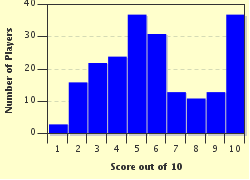Quiz Answer Key and Fun Facts
1. Known as 'the highest navigable lake in the world', Lake Titicaca is a gorgeous spot in the Andes mountains. It lies on the border of which two nations?
2. The Patagonia region extends over large areas of both Chile and Argentina from the Andes all the way to Tierra del Fuego in the south. Approximately how large an area?
3. The Galápagos Islands are famous for having been visited by naturalist Charles Darwin during the voyage of the Beagle when he came to study the many species unique to the islands. Are any of the islands named for him?
4. This city is rife with spectacular views and a wonderful mixture of architecture spanning more than 500 years of history. Viewed here is the Puerto Madero Waterfront on the Rio de la Plata. What city?
5. Angel Falls is the world's highest uninterrupted waterfall, plunging 807 metres down the side of which mountain?
6. Aconcagua is the highest mountain in South America, but is it also the highest mountain in the whole of the Southern Hemisphere?
7. The local population already knew of the existence of Machu Picchu before it was 'discovered' by the outside world. Who found it in 1911 while searching for the city of Vilcabamba?
8. Annexed by Chile in 1888, approximately how far away is Easter Island from its 'parent' country?
9. The Amazon River system is the largest in the world with an average waterflow that exceeds the totals of the next seven largest river systems combined. Which two Brazilian states share the mouth of the Amazon River?
10. The beautiful Iguazu Falls are situated on the border between Brazil and Argentina. What is the name of the river on which they are found?
Source: Author
reedy
This quiz was reviewed by FunTrivia editor
Tizzabelle before going online.
Any errors found in FunTrivia content are routinely corrected through our feedback system.


